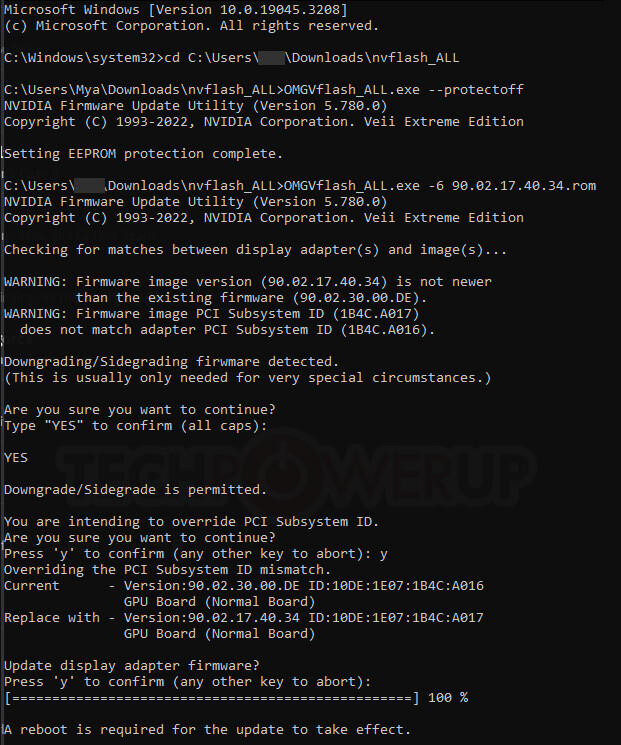
Nvidia Protection Cracked: GPU Overclocking Makes a Comeback
OMGVflash and NVflashk: Unlocking Overclocking Restrictions on Nvidia GPUs
There are tools called OMGVflash and NVflashk that practically allow you to bypass the security barriers that Nvidia has implemented on its graphics cards. In practice, this allows overclockers to insert new vBIOS files into their graphics cards and achieve much better GPU overclocking results.
Around ten years ago, Nvidia “locked” its GPUs. The vBIOS controls the graphics cards and determines key parameters such as maximum GPU power consumption, maximum clock speed, and when the GPU will shut down due to excessive temperature. Prior to the Nvidia GeForce 900 series GPUs, overclocking was possible by injecting a new vBIOS file into the graphics card to unlock some of the preset parameters. However, Nvidia locked this functionality with a security processor located on the chip itself.
The return of the old GPU overclocking system has been made possible through new tools developed independently by two TechPowerUp forum members. TechPowerUp assures that the binary code has been manually inspected to ensure that the tools are virus-free.
In addition to tweaking the parameters, these tools theoretically have the potential to enhance the performance of budget graphics cards. Many brands sell models that are close to the recommended prices, as well as overclocked models for a slightly higher price. The only difference between these graphics cards, in most cases, is the vBIOS file. The tools also enable cross-flashing, which means you can inject a vBIOS from one manufacturer into a graphics card from another.
Here be dragons
However, this does not mean that you should immediately use these tools and flash a new vBIOS onto your GPU, especially if you have recently purchased one of the best graphics cards on the market. This will void your warranty and can potentially damage your GPU. It is important to remember that flashing a new vBIOS means using the graphics card beyond its recommended parameters, so without proper cooling, you can literally destroy it. On RTX 20 series GPUs and newer, the vBIOS also determines the power limits of your GPU, which means that with poor overclocking parameters, you can fry your new (or old) graphics card.
OMGVflash and NVflashk
OMGVflash works with RTX 20 series GPUs and older models and enables cross-flashing. The limitation for cross-flashing is the same power connectors as the RTX 30 and RTX 40 series graphics cards. You can download the tool here.
 TechPowerUp
TechPowerUpNVflashk is a bit more “liberal.” It will attempt to flash any BIOS file. The author gives an example of flashing an RTX 3060 vBIOS on an RTX 4090. Although it may not succeed, the tool will still make an attempt. The author initially created a tool to flash a 1,000-watt vBIOS on an RTX 4090, which was successful, and you can download the tool using this link.
As with any extreme modification, using these tools entails taking on some risk. GPU overclocking is not intended for the average user, especially in today's era where graphics cards and CPUs dynamically adjust their frequencies to provide better performance when needed.
However, older generations and experienced overclockers are surely rejoicing because these tools allow them to bypass the restrictions that Nvidia introduced almost 10 years ago on their new graphics cards.